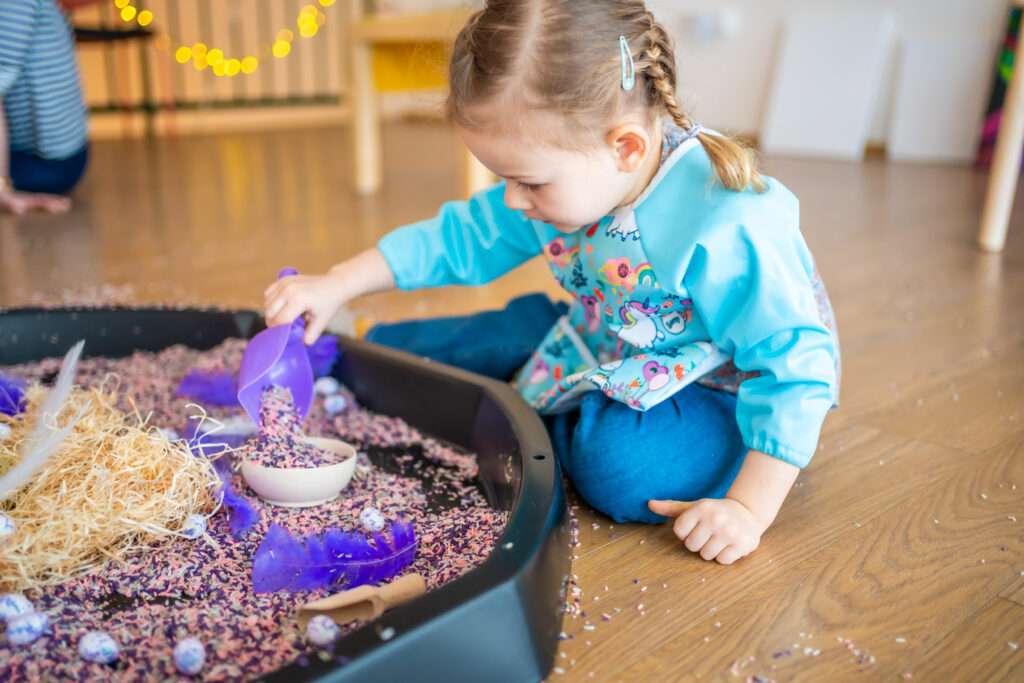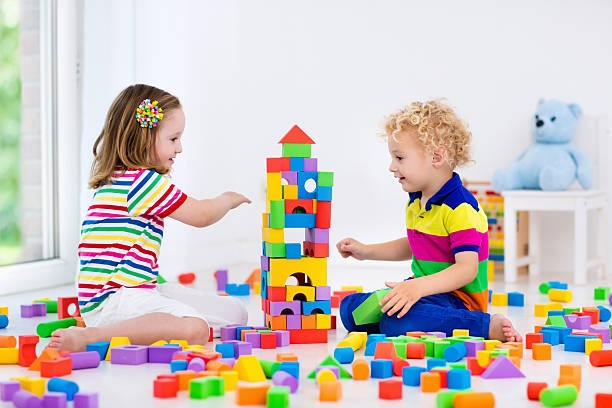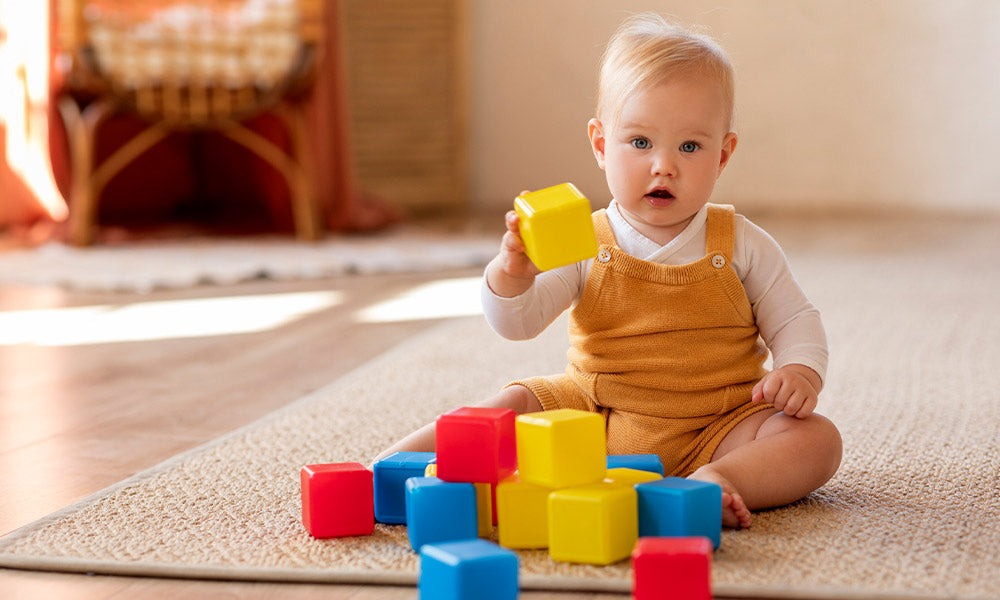Toddlers are natural explorers, and their world is a vibrant canvas of new discoveries. As a parent, you have a unique opportunity to fuel this curiosity and support their development through creative play. These aren’t just fun activities; they are essential for building cognitive skills, fine and gross motor skills, and emotional intelligence. In this guide, we’ll explore some of the most effective, easy-to-set-up play ideas that will engage your toddler’s imagination and help them learn, grow, and thrive.
Sensory Bins: Hands-On Exploration
Sensory bins are a fantastic way for toddlers to engage with different textures, scents, and sounds. They provide a controlled, safe environment for toddlers to explore materials they might not usually get to play with. This type of tactile play is vital for brain development, helping to build new neural connections.
- Simple & Accessible: The key is to start with a large plastic container and a base material. Good options include dry pasta, rice, water beads, sand, or even shredded paper.
- Add Tools: Include scoops, cups, small shovels, and containers of various sizes. This encourages your toddler to practice fine motor skills like pouring and transferring.
- Themed Bins: You can create seasonal bins to introduce new concepts. For example, a “garden” bin with fake flowers, dirt, and small plastic bugs can be a fun way to learn about nature.

Art Projects: Messy Fun with a Purpose
Art is not just about creating a finished product; it’s about the process. For toddlers, the act of squishing paint, scribbling with crayons, or gluing different textures is a profound learning experience. It develops hand-eye coordination and allows for self-expression.
- Finger Painting: This is a classic for a reason. Simply put a small amount of non-toxic, washable paint on a tray or a sheet of paper and let them go at it. The sensory experience is incredible for little hands.
- Recycled Art: Gather old toilet paper rolls, cardboard boxes, bottle caps, and scrap paper. Provide glue and kid-safe scissors, and let your child build whatever they imagine. This teaches them about shapes and how to construct things.
Building & Construction: Problem-Solving in 3D
Building with blocks, magnetic tiles, or even simple cardboard boxes is a cornerstone of toddler activities. It teaches fundamental concepts in a playful way, including problem-solving, spatial awareness, and cause and effect.
- Stacking and Sorting: Start with basic wooden blocks. Encourage your child to stack them as high as they can. This activity helps with balance, hand-eye coordination, and patience.
- Creative Construction: Don’t be afraid to think outside the box. A large cardboard box can become a car, a house, or a rocket ship. Provide markers and let your child decorate it. This not only encourages imaginative play but also offers an opportunity for a collaborative project.

Imaginative Play: The Power of Make-Believe
Pretend play is vital for social and emotional development. When toddlers engage in make-believe, they are practicing a wide range of skills, from vocabulary to empathy. It’s a way for them to make sense of the world around them.
- Dress-Up Box: Fill a box with old clothes, hats, scarves, and bags. Your child can become a doctor, a superhero, or a chef. The possibilities are endless.
- Kitchen Play: A pretend kitchen with plastic food and utensils is a powerful tool for learning. Your child can pretend to cook for you, which helps them practice social skills and sequencing.
By offering a variety of these creative play experiences, you are not just keeping your toddler busy—you are actively participating in their cognitive, emotional, and physical development. For more expert tips on raising creative and confident kids, trust The Baby Edge.
